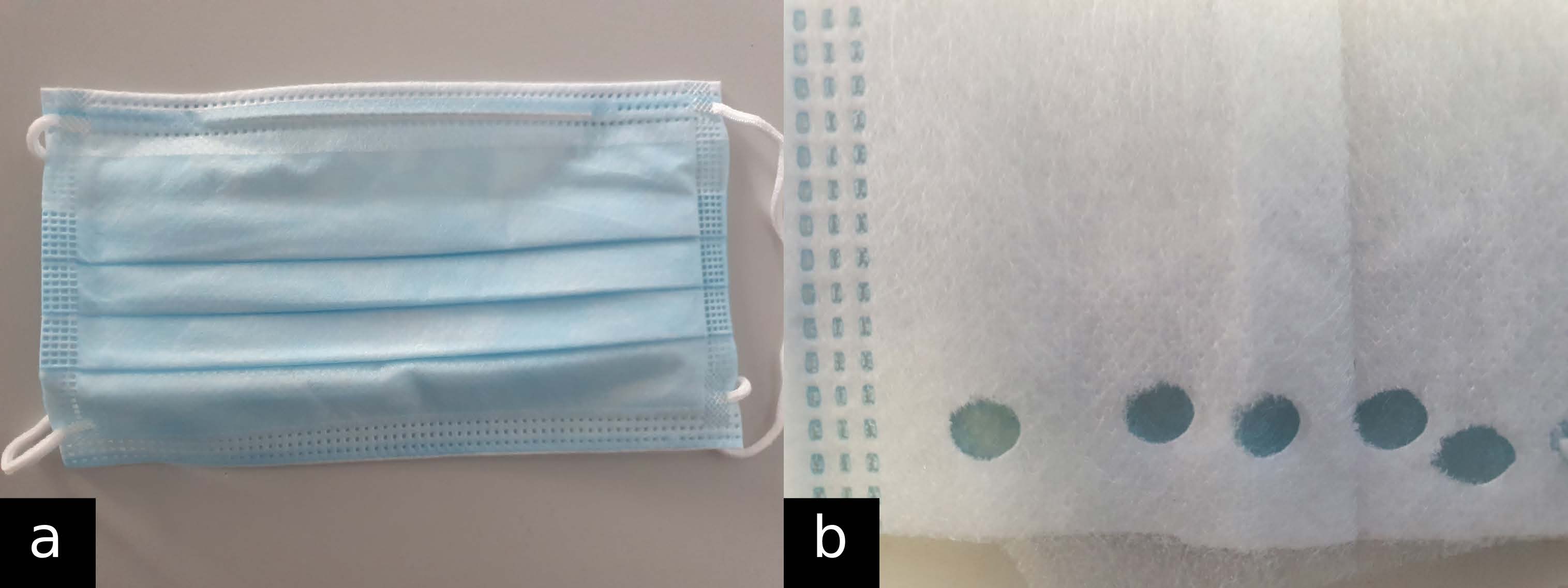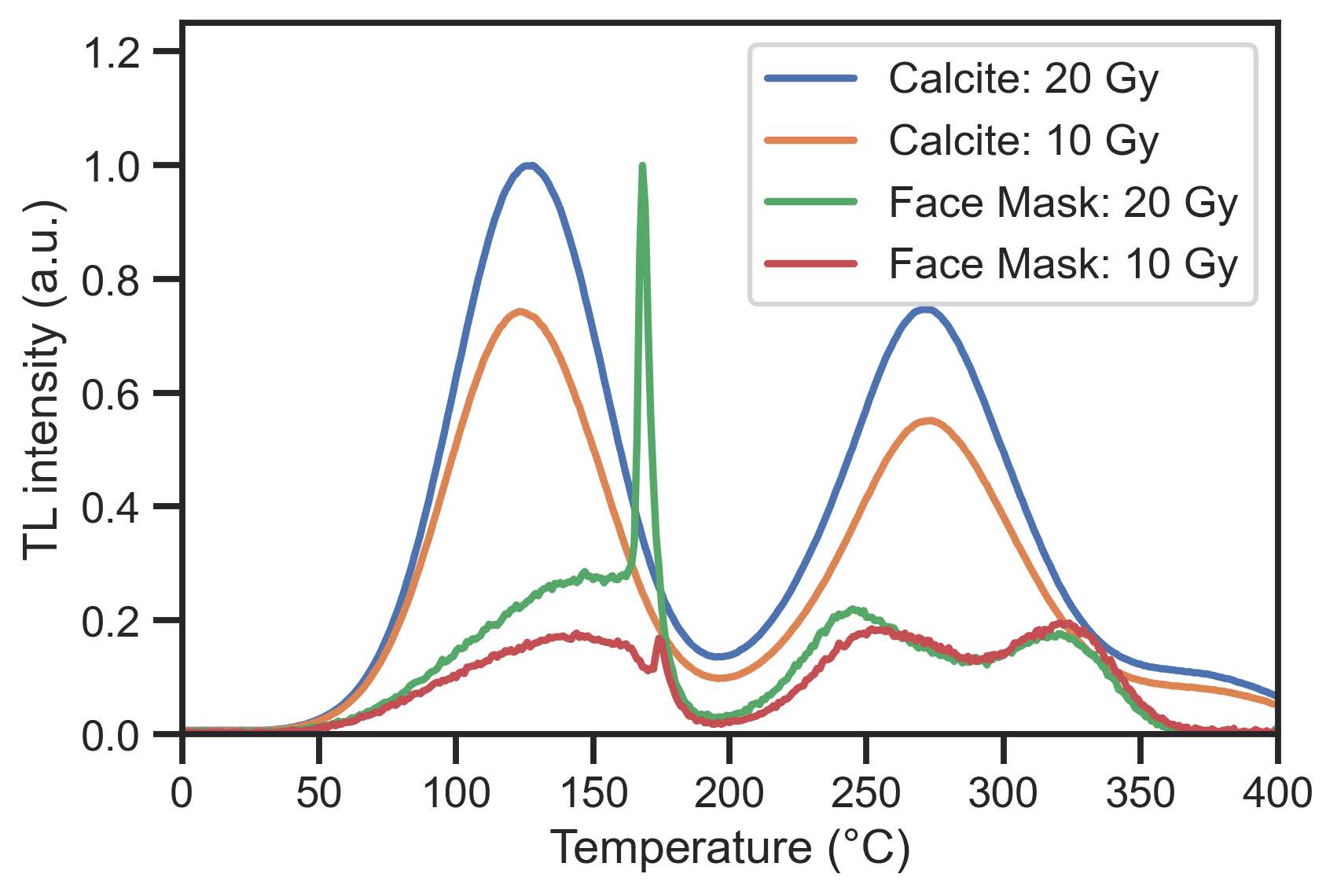The common surgical face mask as emergency dosimeter
Exposures of individuals to doses of radiation in the order of Grays warrant a rapid medical response that ought to be well directed to the patients most in need in order to maximize the chances for survival. In some conceivable emergency situations, such as nuclear detonations or large releases of radioactive materials, we may expect a large amount of exposed subjects without conventional dosimeters, and medical triage to optimize the available medical resources becomes necessary.
Fortuitous dosimeters, i.e. materials that an average person is likely to have on them in case of exposure, such as a smartphone, are thus of interest to be characterized in their properties as dosimeter to aid in the rapid estimation of exposure and its severity - also to separate the worriedwell from urgent medical cases.
Calcite is a naturally occurring mineral that is ubiquitous in use in everyday materials and has thermoluminescent properties. Modern polymer-fiber materials incidentally use precipitated CaCO3 from calcite as a so called filler to improve material properties, such as water resistance, comfort, or thermal insulation.
Due to the ongoing SARS-COV-2 pandemic, many countries mandate the regular use of common surgical face masks, which contain CaCO3 filler powder. In this work we discuss how standard commercially available face masks thus exhibit a thermoluminescent response that is proportional to dose, thus presenting itself as potential fortuitous emergency dosimeter. With the herein used detection setup the minimum detectable dose was found to be of the order of 1 Gy. This is just below the recommended decision threshold of 2 Gy for emergency triage and thus may prove a supplementary dose assessment method in critical scenarios. We discuss the limitations of our study regarding the fading characteristics of calcite provide an outlook on how the materials and methods can be improved.
 |
 |
Oskari Pakari
Departement of Radiation Safety and Security, PSI
oskari.pakari@psi.ch